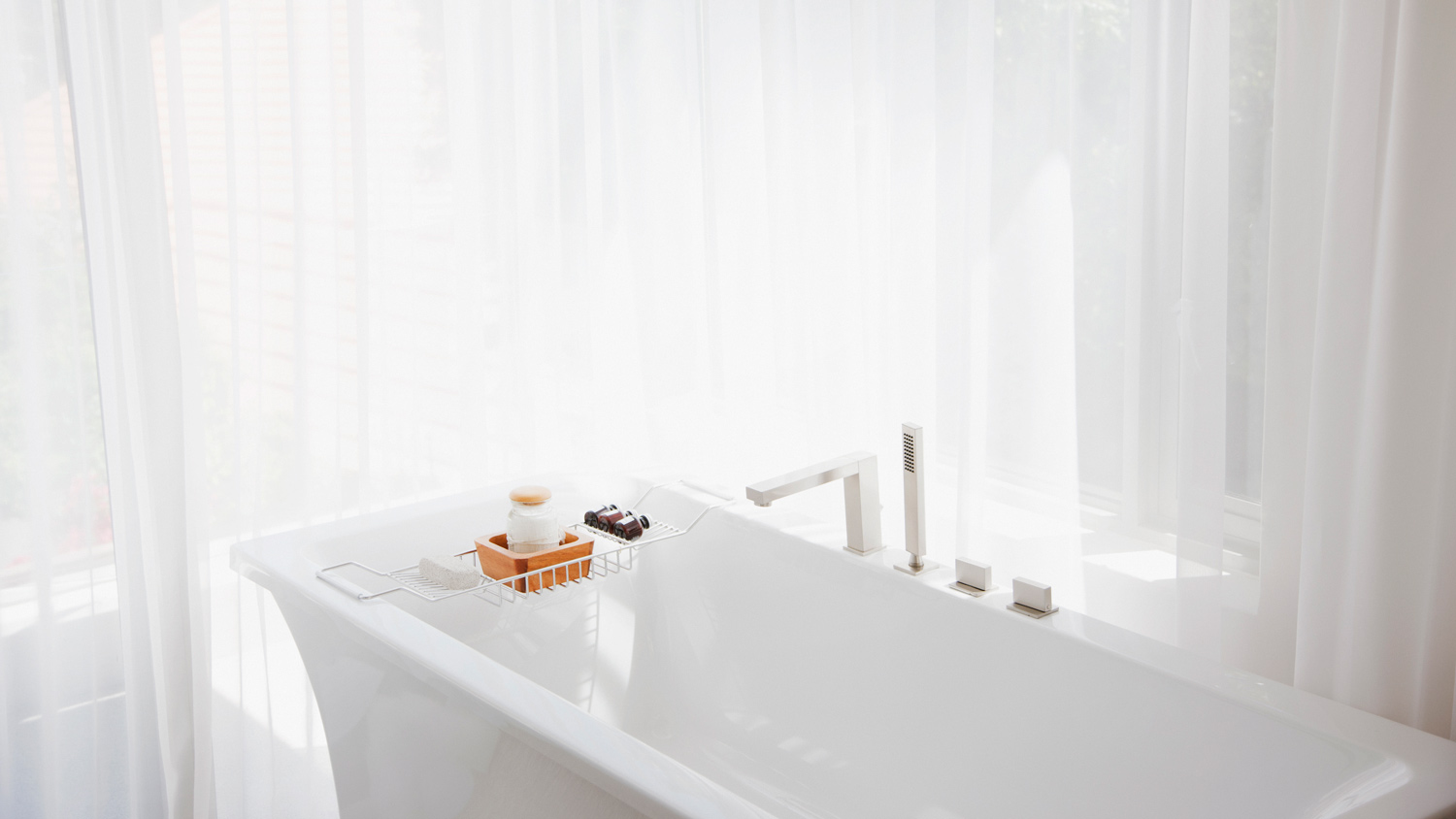
Remodeling your bathroom can add significant value to your home. Your bathroom remodel cost in Columbus, OH will depend on size, fixtures, materials, labor, and other factors.
Garden tillers make it easy to create nutritious, aerated soil for your garden


Tilling aerates and brings nutrients to the top.
Tillers can be electric or gas-powered.
Best time to till is fall or spring.
Consider renting a tiller or hiring a landscaper.
Beneath that top layer of compacted dirt lies nutrient-dense soil that is highly beneficial for a budding garden. Getting to the good stuff involves breaking up the outer crust and rotating the soil, which can be pretty hard physical labor if you’re doing it manually. With a tiller, or a rototiller as it’s sometimes called, breaking up the ground doesn’t have to break your back (or take forever). Here’s some more detail on this practical machine and how to use it.
Tilling a garden involves lifting the soil, breaking up the clods of dirt, and turning it over so your plants can have an aerated, nutrient-rich bed to take root in. A cultivator can do this in small areas such as flower beds, but for larger gardens, a rototiller keeps plants healthy in a quicker and far less labor-intensive way.
Rototillers have an electric or gas-powered engine that mechanically moves the blades (also called tines), shearing through soil much faster than doing it by hand. Many tillers also adjust, allowing you to till at different depths.
Compared to a cultivator, a rotary tiller is a larger and more powerful tool that can turn bigger areas of earth at a time. Cultivators, which might run on gas or electricity, are better suited for small, defined areas (such as your prized tulip bed). They can also help combat weeds and provide aerated soil in established gardens.
When shopping for a mechanical garden tiller, you have two options: rear-tine and front-tine. Choosing the best garden tiller really depends on how you’ll use it. Rear-tine models are more powerful, while front-tine tillers are usually easier to use.
Aside from these, a non-mechanical hand tiller is also an option. While these are more budget-friendly, they don’t offer the same efficiency and ease of use.
One last thing to consider is how frequently you’ll use the rotary tiller. If you only need it to prepare a few new garden plots for the spring, it may be a good idea to rent the equipment rather than purchasing it.
When deciding between the two, keep in mind that it’s not necessary (or beneficial) to till the same earth every year. Also, know that this is a fairly large piece of equipment—if you don’t have adequate transportation, consider hiring a local landscaping company instead.
As the name suggests, a front-tine tiller’s blades are ahead of its wheels, each turning forward while the machine is in operation. Pushing down on the handle lifts the front, allowing you to direct the tiller on its wheels.
A front-tine tiller is usually easier to maneuver than a rear-tine tiller, especially in smaller spaces like a backyard vegetable patch. It will also likely be easier to use for maintenance tasks, from weeding between plant rows to turning fertilizer into the soil.

A rear-tine tiller has blades behind the wheels, helping it dig deeper than its front-tine counterpart. Rear-tine tillers typically provide more power, which makes them good for tough soil and large tilling widths, such as converting a stretch of lawn to a garden.
Hand tillers (aka. twist tillers) are small garden tillers with protruding blades that stick out in opposite directions. Rather than running on an engine, these are powered by elbow grease alone. With firm pressure and a twisting motion, you can manually till the soil one small area at a time. While these are the most affordable option, it will take a lot more time and labor to achieve the same result.
Timing is a crucial element of tilling. In general, you’re looking for warm, dry soil. Aim for a soil temperature that’s no lower than 60 degrees Fahrenheit, as cooler earth can be too hard and damage your equipment.
Tilling your soil is highly beneficial for a new garden. Hard, compacted soil creates a layer of resistance against oxygen and water, preventing new plants from establishing roots and growing healthy.
What’s more, it keeps water from draining properly, which increases the likelihood of flooding and/or overwatering. If you’re not able to wait until the fall or spring, till the soil for your new garden and wait a few weeks before you plant.
If you’ve got the time to plan, it’s best to till during the fall when the ground is still soft. This will mix in all the dead leaves and plants from the season, allowing plenty of time for them to break down into nutritious soil by the spring. Again, be sure your soil is warm enough to avoid damaging your tiller.
While not quite as ideal as the fall, spring is the second-best time to till your soil. It has the advantage of warmer soil, as well as the opportunity to add mulch or fertilizer while tilling. Keep in mind that it may delay your garden, though, as you’ll need to wait around three weeks before you can plant.
Tillers are designed for ease of use—all you really have to do is keep the equipment straight while it propels itself forward. Since this is a sharp, powerful tool, taking the proper safety precautions is extremely important. Always read the manual and make sure you fully understand the controls before you go to town on your soil.
Apart from that, you just need to worry about soil prep and allowing the proper amount of time for planting. Follow these basic steps for how to till a garden:
Call the dig line to ensure you won’t disturb any underground utilities.
Clear away rocks, large weeds, and other obstructions.
For hard and compacted soil, begin at the shallowest depth setting; for softer ground, start at a medium depth.
Avoid pressing down too hard on the machine as you’re starting out—do a couple of passes in opposite directions to soften the soil where necessary.
Using light pressure, maintain a straight line as the machine propels forward.
Continue making passes with the garden tiller until you reach the desired depth (aim for around 8 inches or so).
Wait one to three weeks (the longer, the better) before planting to allow the soil microorganisms to reestablish and start creating nutrients again.
Tilling disrupts the natural balance of microbes and fungi in the soil, so doing it too often will cause more harm than good. Rather than making it an annual ritual, only till when the soil needs it.
Using a ground cover such as organic mulch in the fall will help keep the soil structure soft until spring, preventing the need to re-till when it’s time to plant again.
From average costs to expert advice, get all the answers you need to get your job done.

Remodeling your bathroom can add significant value to your home. Your bathroom remodel cost in Columbus, OH will depend on size, fixtures, materials, labor, and other factors.

Forget the spa. Steam showers bring the luxury right into your home. This guide will help you budget steam shower costs—no matter the specs.

A bidet—stand-alone, attachment, spray nozzle, or toilet combo—reduces toilet paper usage and saves money, but how much is a bidet? Here’s how much you’ll pay.

DIY sink installation is a doozy but do-able for those with experience. Use this guide to learn how to install a bathroom sink in a few steps.

An updated bathtub can give a bathroom a whole new look. Find out how much it costs to replace a bathtub in Kansas City, MO, including prices by type and labor costs.

An updated bathtub can give a bathroom a whole new look. Find out how much it costs to replace a bathtub in Atlanta, GA, including prices by type and labor costs.